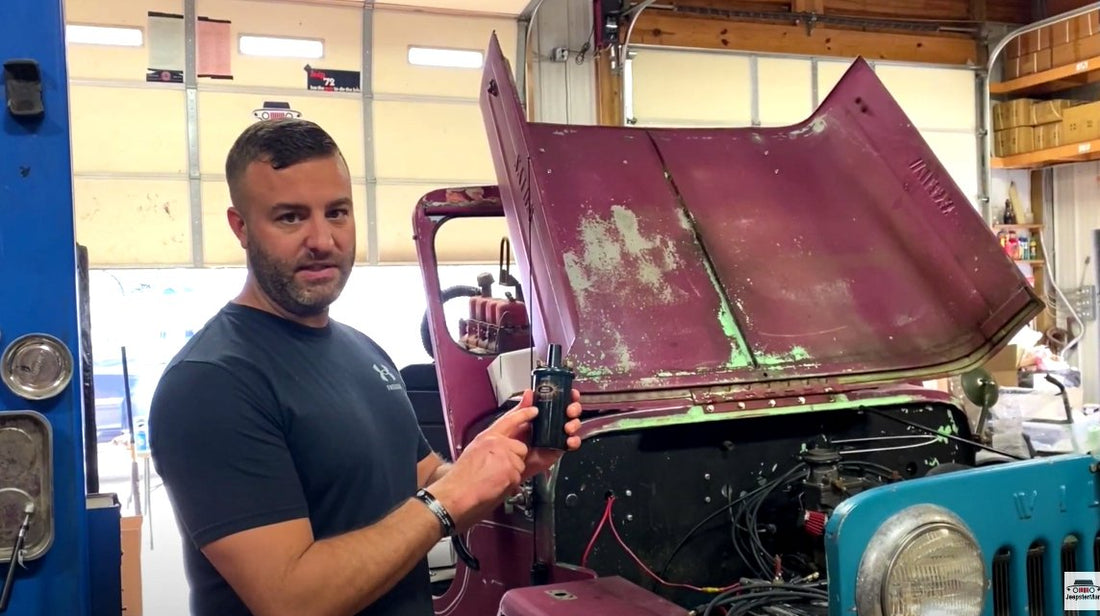Basic overview of how a 12-volt electronic ignition system works:
Battery: The battery provides the power for the entire electrical system, including the ignition system.
Ignition switch: When you turn the ignition switch, power is sent to the ignition coil.
Ignition coil: The ignition coil transforms the battery's 12-volt output into the thousands of volts needed to create a spark.
Distributor: The distributor receives the high voltage from the ignition coil and distributes it to the spark plugs in the correct firing order.
Spark plugs: The spark plugs receive the high voltage from the distributor and create a spark that ignites the fuel-air mixture in the engine's cylinders.
Overall, the electronic ignition system replaces the old mechanical ignition system that relied on points and a condenser to create a spark. The electronic ignition system is more reliable and requires less maintenance than the old mechanical system. Electronic ignition systems are generally more efficient than mechanical point distributor systems. There are several reasons for this:
Consistent performance: Electronic ignition systems are designed to provide consistent spark timing, which helps improve engine performance and efficiency. In contrast, mechanical point distributor systems can become misaligned or worn over time, resulting in inconsistent performance.
Maintenance: Electronic ignition systems require very little maintenance compared to mechanical point distributor systems. Electronic systems do not require periodic adjustments or replacement of ignition points, which can save time and money in the long run.
Higher voltage: Electronic ignition systems typically provide a higher voltage spark than mechanical point distributor systems. This higher voltage helps ensure complete combustion of the fuel mixture, resulting in better fuel efficiency and reduced emissions.
More precise timing: Electronic ignition systems can provide more precise spark timing than mechanical point distributor systems. This precision allows the engine to operate at peak efficiency, resulting in better performance and fuel economy.
The recommended battery size for your Willys Jeep with the 4-134 F-Head engine is a 12-volt Group 24 battery. However, it's always best to consult your owner's manual or a professional mechanic to ensure that you are using the correct battery size for your specific make and model. Other factors, such as climate and altitude, can also affect the appropriate battery size for your vehicle.
A solid-state distributor is an electronic ignition system that replaces the traditional mechanical distributor found in older vehicles. It uses an electronic control module to control the spark timing and duration, which results in more precise and consistent ignition timing. The solid-state distributor consists of several components, including the control module, pickup coil, reluctor, and ignition coil. The pickup coil senses the position of the reluctor, which is mounted on the distributor shaft and rotates with the engine. The control module uses this information to control the spark timing and duration, which is sent to the ignition coil to produce the spark that ignites the air/fuel mixture in the engine's cylinders. Solid-state distributors are more reliable, efficient, and offer improved engine performance compared to traditional mechanical distributors.
The ignition coil used for an electronic ignition system and a mechanical points system on a CJ is generally the same. However, some electronic ignition systems may require a specific type of ignition coil designed for use with that system. It is always recommended to check the manufacturer's specifications to ensure compatibility with your specific ignition system. In general, electronic ignition systems tend to put less stress on the ignition coil than mechanical points systems. This is because electronic systems use a solid-state switching device (such as a transistor) to control the current flow to the coil, whereas mechanical points systems use physical contact points that wear down over time and can cause the coil to overheat or fail prematurely. As a result, an ignition coil for an electronic ignition system may not need to be replaced as frequently as one for a mechanical points system.
While electronic ignition systems can require different types of spark plugs compared to mechanical point distributor systems, it ultimately depends on the specific electronic ignition system being used. Some electronic ignition systems may require a specific type or heat range of spark plug for optimal performance, while others may be compatible with a wider range of spark plugs.
Yes, you would need specific spark plug wires for the electronic ignition system on a 1962 CJ3B. Electronic ignition systems typically require wires with lower resistance than traditional mechanical systems, so you'll want to make sure you have wires that are compatible with your specific electronic ignition setup. Consult your electronic ignition system's instructions or the manufacturer for recommended spark plug wire specifications. It's also a good idea to choose high-quality wires that are durable and can handle the demands of off-road driving if you plan to use your CJ for that purpose.
Overall, electronic ignition systems are more efficient and reliable than mechanical point distributor systems, which is why they have become the standard in modern vehicles.

